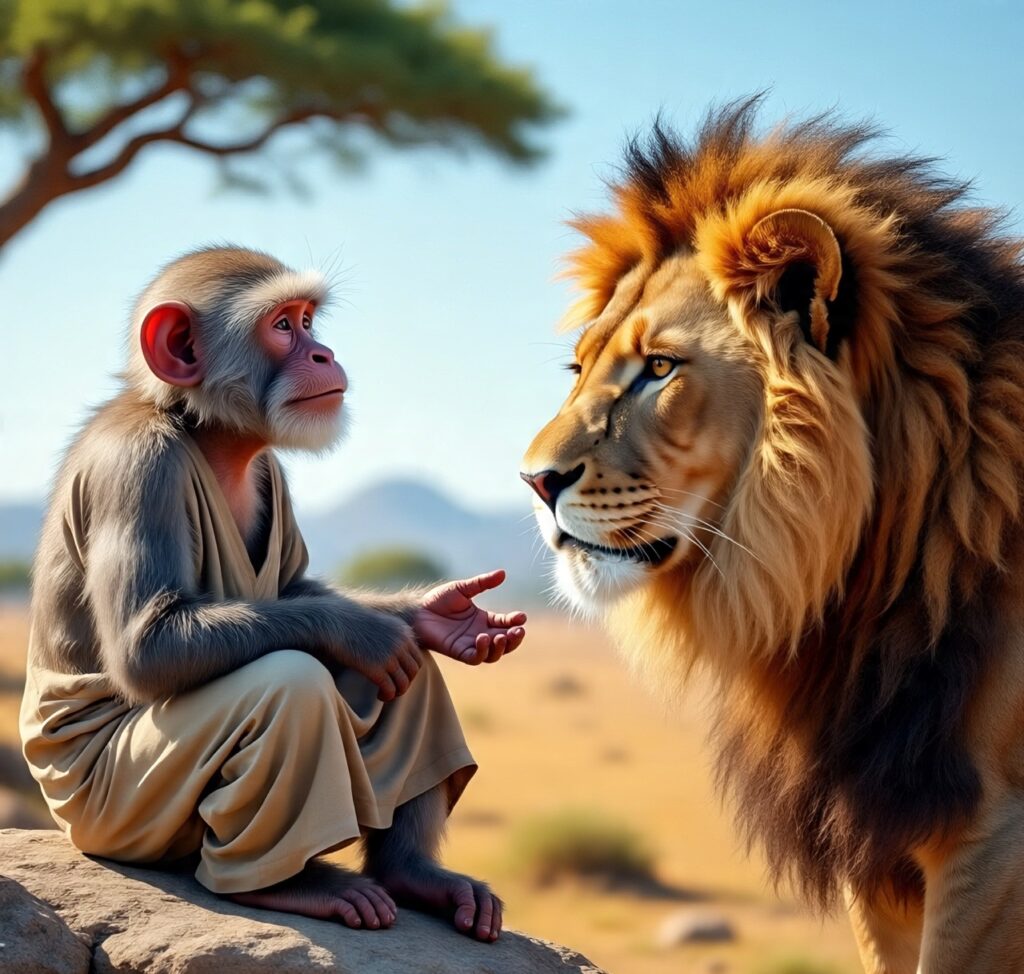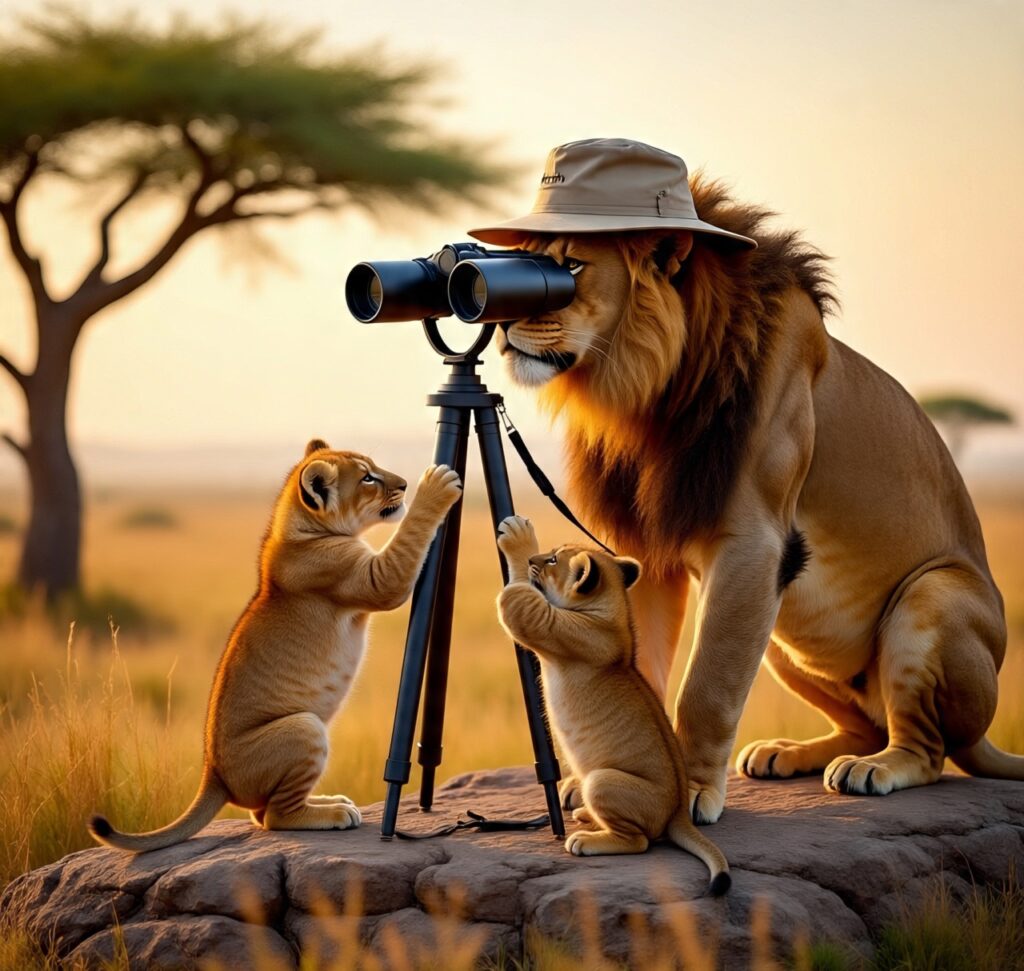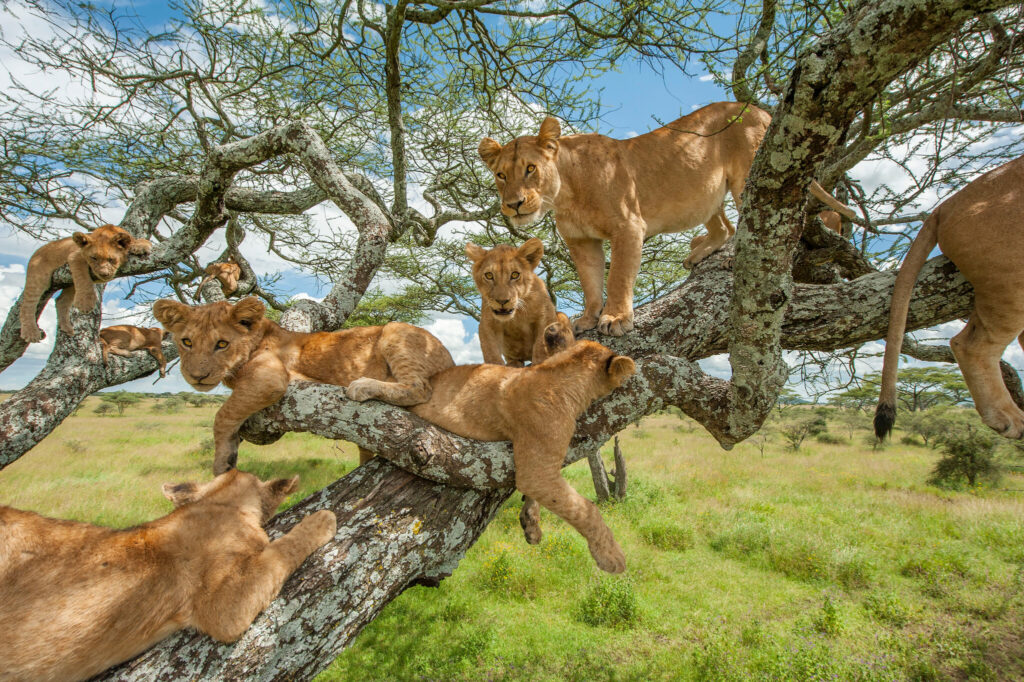Tales of The African Savanna: A Wise Monkey’s Lesson
What Lions Never Forget: A Wise Monkey’s Lesson on the Savanna’s Unwritten Laws In the golden grasslands of Uganda’s national parks, where lions reign as kings and fig trees double as royal thrones, there exists an unspoken code of the wild—lessons so vital that even the mightiest predators dare not ignore them. Legend has it that long ago, a wise old monkey once whispered truths to a young lion, teachings that shaped the savanna’s balance forever. Whether myth or reality, these principles endure in the hunts, alliances, and survival strategies of Uganda’s prides today. Here’s what lions never forget—and why every safari-goer should know these secrets too. 1. “Respect the Buffalo—Even Kings Can Fall” A lion may rule the savanna, but a buffalo herd is its parliament. Wise monkeys (and observant guides) know that overconfidence kills more lions than hunger. In Murchison Falls, where buffalo gather in massive herds, lone lions learn the hard way: one wrong charge, one misjudged horn, and the hunter becomes the hunted. The lesson? Never underestimate a united front. 2. “Trust Your Sisters—The Pride is Your Strength” Lionesses are the true architects of survival. They hunt together, raise cubs collectively, and defend territory as one. A solitary lion is a vulnerable lion—a truth the monkey reportedly drilled into the young male’s head. In Queen Elizabeth National Park, prides that cooperate thrive; those that fracture fall to hyenas or rival males. 3. “The Hyena’s Laugh is a Warning, Not a Joke” Hyenas aren’t just scavengers—they’re ruthless opportunists. Lions dominate them one-on-one, but a clan can overwhelm even a healthy pride. The monkey’s advice? “Steal their meals, but never turn your back.” In Kidepo Valley, lions often let hyenas do the hard work of hunting, only to bully them away from the kill—a tactic passed down through generations. 4. “Trees Are More Than Shade—They’re Strategy” While most lions ignore branches, Uganda’s Ishasha tree-climbers turned the monkey’s tip into an art form: Escape ground heat and biting flies Spot prey (or enemies) from a throne-like vantage Let cubs play safely above hyena reach 5. “Cubs Are the Future—Protect Them or Perish” A pride without cubs is a dynasty doomed. Invading males kill offspring to trigger new births, so lionesses hide their young in thickets or form defensive circles around them. The monkey’s grim reminder: “A king without heirs is just a placeholder.” 6. “The Night Belongs to the Bold—And the Careful” Under moonlight, roles reverse: Buffalo become vengeful shadows, charging at rustles in the dark Leopards turn into silent assassins, stealing kills from drowsy lions Nomadic males patrol boundaries, seeking weak points The wise monkey’s final lesson? “Rule by day, stay alert by night.” Our Destinations Bwindi Impenetrable National Park Jinja- Adventure City Kibale National Park Kidepo Valley National Park Lake Mburo National Park Mgahinga Gorilla National Park Murchison Falls National Park Mt. Elgon National Park Queen Elizabeth National Park Semuliki National Park Ziwa Rhino and Wildlife Sanctuary Mt. Rwenzori National Park






